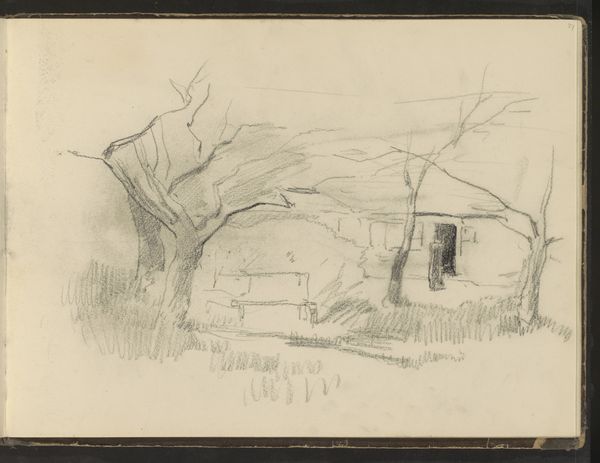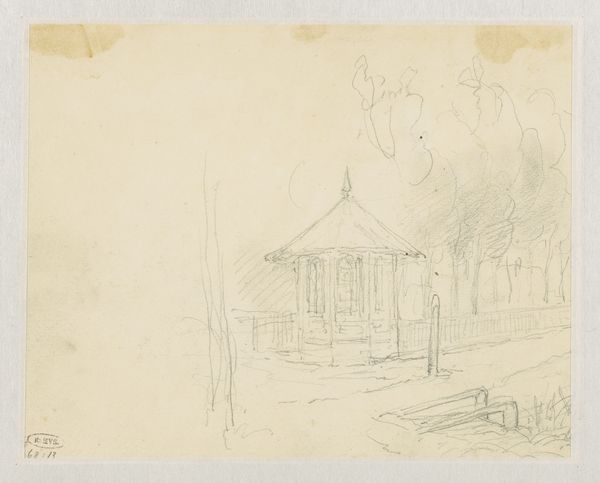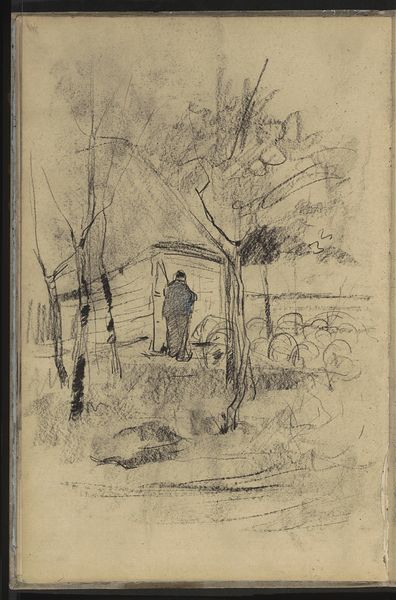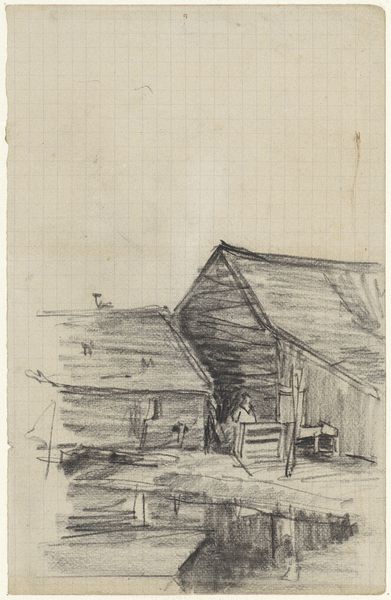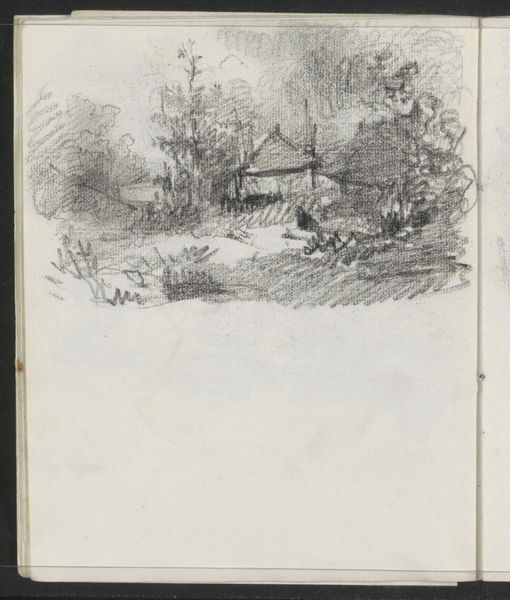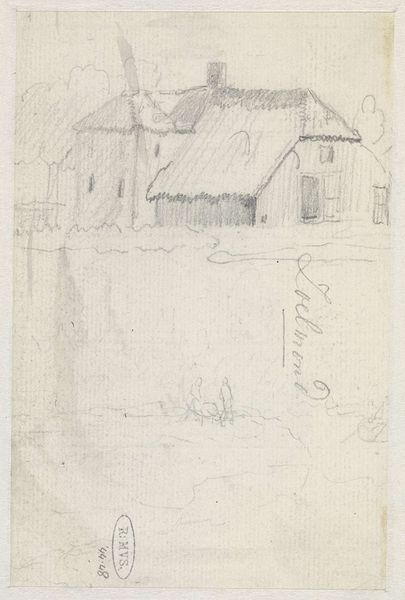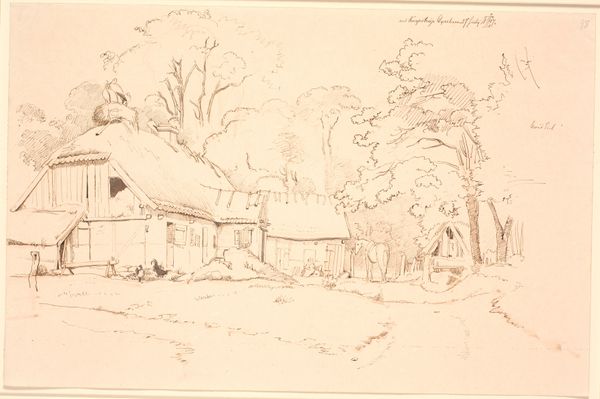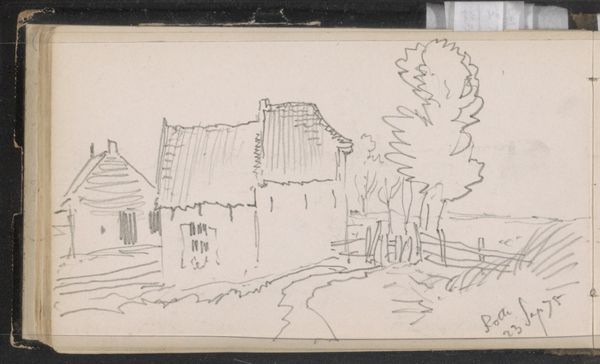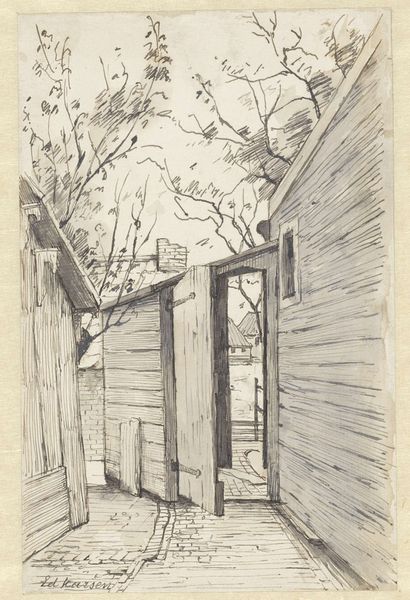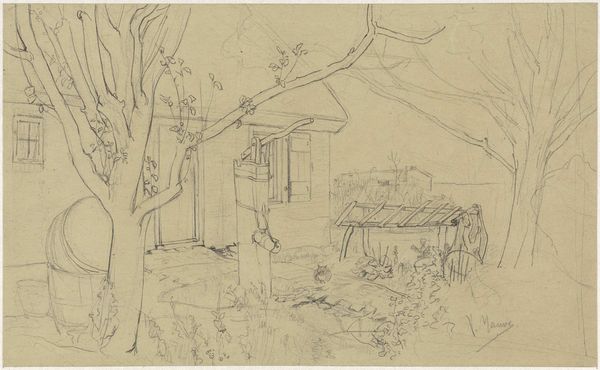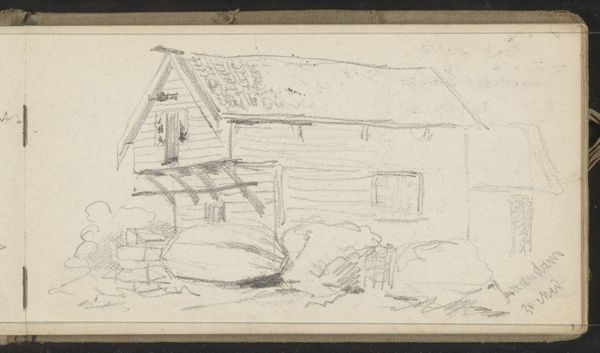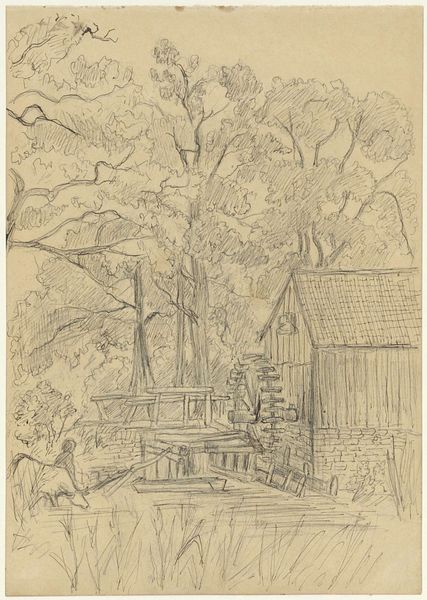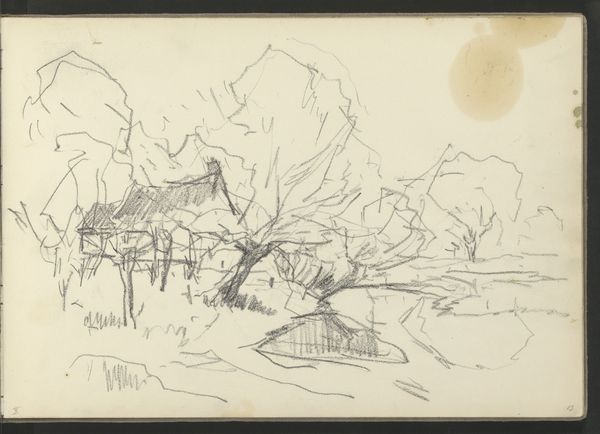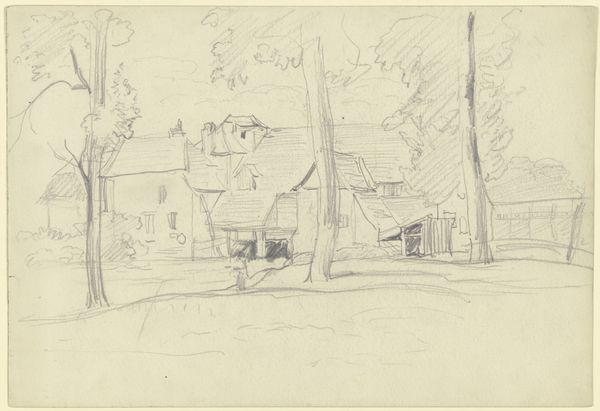
drawing, pencil
#
drawing
#
quirky sketch
#
impressionism
#
pen sketch
#
sketch book
#
landscape
#
personal sketchbook
#
sketchwork
#
pen-ink sketch
#
pencil
#
pen work
#
sketchbook drawing
#
storyboard and sketchbook work
#
sketchbook art
Copyright: Rijks Museum: Open Domain
Curator: Welcome. We’re standing before “Boerderij,” a drawing by Willem Witsen, likely created around 1887-1888. It's currently held in the Rijksmuseum. Editor: It has an interesting starkness to it, a quiet solemnity achieved through simple lines. There is a certain rawness that conveys more than just an objective impression. Curator: The lines certainly are key. The structure relies almost entirely on the interplay of verticals and sharp diagonals which, considered through a semiotic lens, establishes the pictorial logic that makes the composition comprehensible. Editor: It feels inherently tied to a particular place and time, to labor and the land. You feel this especially when you understand the rise of industrialization occurring during Witsen’s time. How might an increasingly urban population perceive the subject of this drawing? A nostalgia for rural life perhaps? Curator: Perhaps. But if we focus on the aesthetic experience alone, it's quite engaging. Observe how the lack of detail is actually very effective; the absence of specific information draws your eye across the piece, and it prompts you to supply details using memory, or experience. The tonal variation is remarkable, for simple pencil and pen. Editor: Yet that absence can be seen as symbolic, perhaps reflecting the displacement felt by many during the rapid industrial transformation. The empty field is an emblem of the loss of a traditional way of life and values. Curator: But we might equally view that emptiness as an integral compositional tool that offers a field within which the architectural form might act as the signifier… Editor: While I value your focus on compositional signifiers, might it also point towards the socioeconomic tensions inherent in a changing society and thus challenge the privileged urban gaze? Curator: A valid point! But even viewing this work without socio-historical context, one must appreciate its sophisticated engagement with form, line and absence… Editor: I think this is a crucial conversation; art doesn’t exist in a vacuum and interpreting historical context alongside form deepens and enriches our encounter. Curator: Indeed. It allows us to perceive both the structure and its meaning more richly. Editor: Absolutely. Thank you for this stimulating exchange. Curator: The pleasure was all mine.
Comments
No comments
Be the first to comment and join the conversation on the ultimate creative platform.
